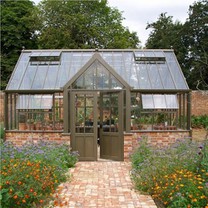一、How to prevent freezing damage
①Irrigation and heat preservation. Irrigation can increase the heat capacity of the soil, prevent the ground temperature from falling, stabilize the air temperature near the surface, and help the temperature rise steadily, so that the frozen vegetable tissues can restore their functions.
② Let the air cool down. After the vegetables in the greenhouse are frozen, do not close the shed to heat up immediately, only let the air cool down, so that the temperature in the shed rises slowly, and avoids the rapid rise in temperature that will cause the frozen tissue to become necrotic.
③ Manual water spraying. Water spray can increase the air temperature in the shed, stabilize the temperature of the shed, and can inhibit the evaporation of water from the frozen tissue, and promote the tissue to absorb water.
④ Cut off the dead branches. Cut off the frozen stems and leaves in time to avoid moldy and diseased tissues and induce diseases.
⑤ Set up a shed for shade. Shading in the greenhouse can prevent the frozen vegetables from direct sunlight and cause the frozen tissue to lose water.
⑥ Apply fertilizer. After the frozen plants grow slowly, they should be topdressed with quick-acting fertilizers, which can be sprayed on the surface with 2% urea solution or 0.2% potassium dihydrogen phosphate solution.
⑦ Prevent and control diseases and insects. After the plants are frozen, diseases and insects are easy to take advantage of, so some protective agents and agents for preventing diseases and insects should be sprinkled in time.
二、How to prevent climate disasters
Disastrous weather in vegetable production in energy-saving solar greenhouses include: continuous snow (rain, fog) days, low temperature and less sunlight, snowstorms, sandstorms, etc. Although the probability of this kind of weather is very low, once encountered, it will be extremely unfavorable to production. The following measures can be taken during production.
Optimize the structure and improve the thermal insulation effect.
Focus on "protection" and improve plant resistance to damage. In winter management, keep the temperature low and take conservative measures to ensure that the plants can survive the winter safely. Keep 25-28℃ during the day and 10-14℃ at night. While spraying with drugs to prevent disease, spray 1:200 times sugar, nitrogen solution, or add 0.5% glucose and 0.3% potassium dihydrogen phosphate, which can not only improve resistance, but also improve the ability of plants to resist downy mildew. .
Even in the rainy and snowy weather, more light is seen on the basis of heat preservation, receiving the scattered light of the cloudy day, and keeping the temperature of the solar greenhouse at the same time. Increase the heat before the temperature drops to the point where growth is about to hurt, to ensure that the plants are not frost-damaged. Heat up to 13-15°C, the lowest biological temperature, not too high to prevent an increase in respiratory consumption.
After the rainy and snowy days, they will return to thatch. When it clears after a cloudy and snowy day, the plant will wilt due to the imbalance of the plant moisture after uncovering the thatch. The growth point may be damaged, and the whole greenhouse vegetable may die. At this time, pay attention to returning the thatch. Thatch, so that it can see light in the early morning sun, and gradually adapt. If you find that the plant is wilting, you should cover the grass thatch in time and wait for the plant to recover before uncovering. If wilting occurs, you should cover the grass again. It can be repeated several times, or after returning to thatch, spray water on the leaves to adjust the water balance.






